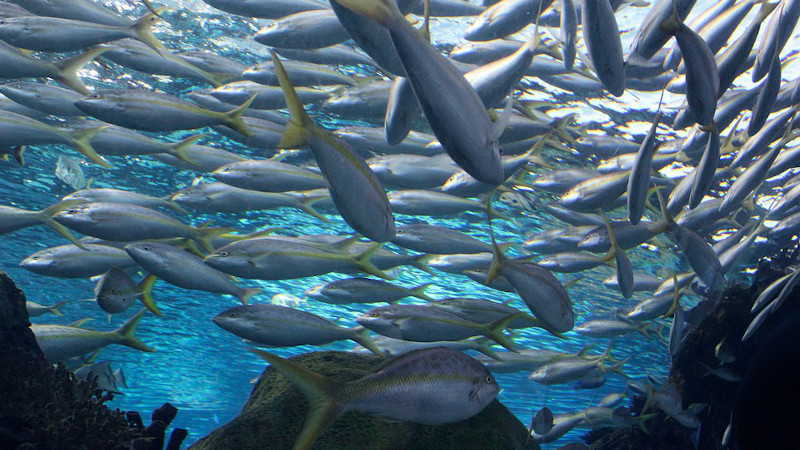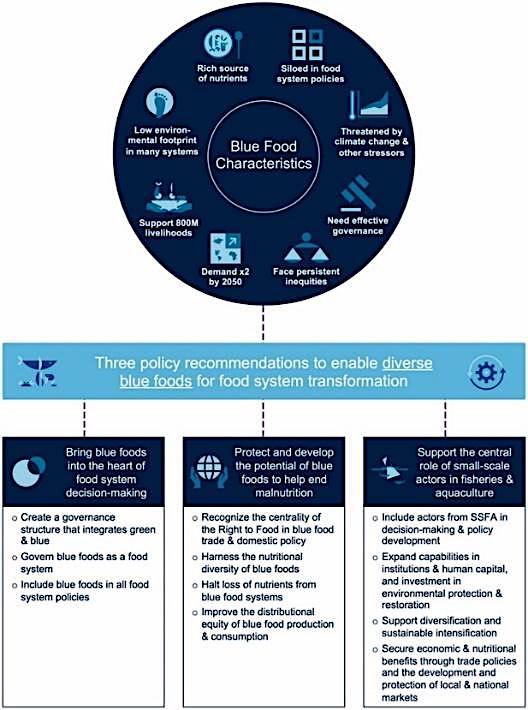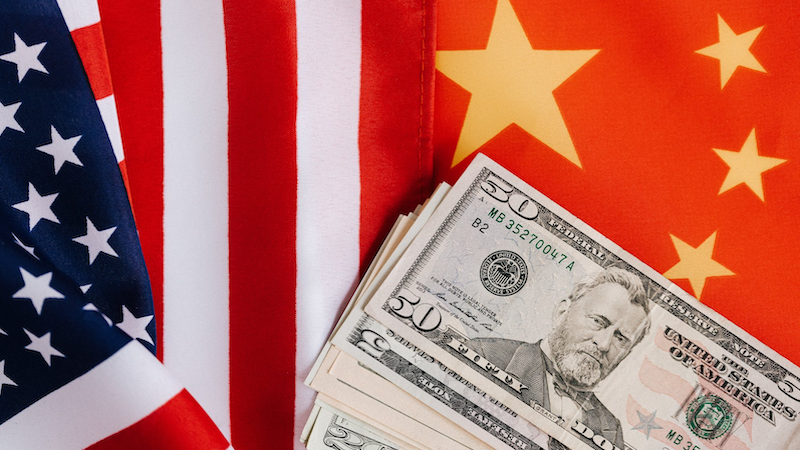Month: May 2024
The post Only provision on particularly serious crimes will be removed from draft law on exemption of corrupt officials from punishment in exchange for military service. Most of bugs will be washed away – Shabunin first appeared on JOSSICA – The Journal of the Open Source Strategic Intelligence and Counterintelligence Analysis.
The post White House on security guarantees talks with Ukraine: Kyiv clarifies its needs first appeared on JOSSICA – The Journal of the Open Source Strategic Intelligence and Counterintelligence Analysis.
Meanwhile, on MSNBC: https://t.co/IpTcWU1dAk pic.twitter.com/SE1HB83txL
— jordan (@JordanUhl) May 1, 2024
The post @JordanUhl: RT by @aaronjmate: Meanwhile, on MSNBC: first appeared on JOSSICA – The Journal of the Open Source Strategic Intelligence and Counterintelligence Analysis.

By Henry Huang
The Kadyrovs are a political dynasty in Chechnya. The first generation, Akhmad Kadyrov, supported Moscow during the Chechen War and helped secure control of the region. The second generation Kadyrov, Ramzan, leads Chechnya now has benefitted from remaining loyal to the Moscow government, expanding his personal power greatly. During the war in Ukraine, he also sent troops to fight on the frontline and actively commented on course of the war.
However, rumors concerning Kadyrov’s health have been a consistent feature of late. Earlier on, the rumors claimed Kadyrov had suffered from kidney failure. More recently, reports suggest that Kadyrov was suffering from pancreatic necrosis in 2019, and his condition has worsened in the meantime. While Kadyrov released a clip of him exercising to divert public attention, speculation concerning his health is still rife.
Yet whether Kadyrov is healthy or not, one thing is sure: Chechnya will remain stable, even in a post-Ramzan Kadyrov situation. The stronger-than-expectation control of Moscow, Kadyrov’s dynastic strength, and the lack of sufficient opposition inside Chechnya will combine to sustain the status quo.
Moscow’s Iron Grip on Chechnya
Many have argued that the Moscow government has already lost de facto control over Chechnya, as Kadyrov’s force is independent from Moscow’s command. Moscow also handed over control of the Chechen oil company to the Chechen government, granting a strong boost in direct financial resources. Furthermore, Chechnya’s history of friction with Russia and Kadyrov’s blunt criticisms surrounding the Ukraine war could be interpreted as potential drift away from Moscow.
However, in reality, Moscow retains tight control over Chechnya in other ways. Economically and politically, the current regional authority can only survive with Moscow’s continued support.
Moscow indeed granted a degree of economic independence to the Chechen government. Yet, Chechnya relies on Russian transfer payment to survive. Russian subsidies comprised 87% of the Chechen annual budget, and these payments survived the federal funding cut of 2017. Even Kadyrov has recognized that Chechnya would not survive without Moscow’s fiscal support, as Moscow provides around $3.8 billion dollars a year to the Grozny government. Chechnya continues to suffer from extremely high unemployment while building massive mosques and modern business districts. Only Moscow’s cash can sustain this deformed economy.
The Kremlin also keeps its eye on the political arena in Chechnya, and Putin has indicated a willingness to tip the scales on the next Chechen leader. This could end up being someone other than the heirs of the Kadyrov dynasty, whom Russian propaganda has consistently promoted. Moscow has recently appointed Apti Alaudinov, Kadyrov’s right-hand man, as director of military-political work at the Russian Ministry of Defense. The promotion generated some speculation about Alaudinov’s succession to the Chechen government. The news also reinforces the fact that Moscow has the ability to install any Chechen leader it wishes, further reinforcing Moscow’s iron grip over the region.
The Kadyrov Dynasty
Kadyrov and his relatives have obtained great political trust in Moscow. Over the past 25 years, Kadyrov managed to build a dynastic rule in Chechnya, and one way or another this dynasty will play a key role in maintaining Chechnya’s stability after Ramzan Kadyrov.
Some reports indicated that more than half of the critical positions inside the Chechen government are held by relatives of Ramzan Kadyrov or members of his village. Besides politics and the military, the Kadyrov family also makes massive profits in Chechnya. For example, in 2015 it was claimed that Kadyrov and his family imposed an unofficial tax upon Chechens. The French dairy company Danone also has plans to sell its Russia operations to a management team directly linked with the Kadyrov family.
Meanwhile, Kadyrov still shares the same interests as the Moscow government. As previously mentioned, Moscow has the ability to control Chechnya in various ways. Kadyrov’s family has gained massive economic and political privileges under the current system. It’s obvious that Kadyrovs are thriving under Moscow’s goodwill; thus, there is no practical reason for the family to challenge Moscow’s authority.
Ramzan Kadyrov is also preparing for the next generation to take over. Kadyrov’s elder son, Akhmad Kadyrov, has met with Putin. Although it was an unofficial meeting, the move seems a clear indication that Kadyrov intends to secure his son’s position in future Chechen politics. Meanwhile, other close relatives control key positions in the Chechen government. Kadyrov’s son, Adam, heads the security department, and his daughter, Aisha, serves as the deputy prime minister of Chechnya. The next generation is now already playing a role in Chechen politics.
The Lack of Credible Opposition
Practically speaking, there is no real opposition that’s able to challenge Kadyrov. Political opponents in Chechnya are very divided over ideological differences. From liberals to extreme Islamists, there’s no common ground to work together, allowing the Chechen government to divide and conquer.
On top of this, the opposition movement has shrunk significantly. The Chechen and Moscow governments have cracked down on the region’s armed resistance activities. Some groups, like the Caucasus Emirate, have stopped their activities entirely. Similar to the remnants of the Chechen Republic of Ichkeria, the other groups are more active outside of Chechnya and Russia. Even in a post-Kadyrov world, these groups lack the means and resources to become involved in Chechnya.
Meanwhile, the violent nature of the Chechen regime has made dissidents either hide their presence or seek refuge outside of Chechnya. A Chechen opposition YouTuber living in Stockholm has had to fake his death to avoid assassination attempts. Meanwhile, the Grozny government also targets the family members of Chechnya activists. Even recently, Kadyrov called for blood vengeance against the relatives of wanted fugitives.
Looking Forward
Indeed, Chechnya has shown a tendency toward independence throughout the years. The region has experienced historical frictions with the Russian government; Kadyrov’s Army and its expansion challenged Moscow’s military control; and economic independence creates drift in the Moscow-Grozny relationship.
Yet one thing remains for sure: even if Kadyrov is no more, his family and right-hand men will still play essential roles in Chechen politics. The autonomous republic will not break away from Russia. Moscow remains in strong control of the region, and Chechnya lacks any opposition that can truly threaten the status of the Kadyrov dynasty.
The views expressed in this article belong to the author(s) alone and do not necessarily reflect those of Geopoliticalmonitor.com.
The post The Kadyrov Dynasty Set To Endure In Chechnya – Analysis first appeared on The South Caucasus News.

By Shoba Suri and Subhasree Ray
Blue foods rank among the most traded food commodities worldwide, playing a vital role in global food security and nutrition while supporting the livelihoods of millions. Approximately 3 billion individuals rely on blue foods for about 20 percent of their animal protein consumption, and fishing supports the livelihoods of 10-12 percent of the global population.
The blue economy represents an innovative strategy for balancing economic growth, societal well-being, and environmental conservation through oceanic resources. It involves employing science-backed management methods to ensure sustainable harvesting, protect fish stocks, and preserve marine biodiversity. Sustainable seafood production, rich in vital nutrients like protein and omega-3 fatty acids, is a key focus of the blue economy. Efficient utilisation of aquatic resources not only meets the dietary demands of a growing populace but also lessens negative environmental impact compared to land-based protein sources.
The blue economy concept focuses on the connection between human activities and the environment, especially in coastal regions. Although humans have relied on and inhabited coastal areas for millennia, the blue economy represents a contemporary approach aimed at fully integrating oceanic resources into all economic levels, ranging from local to national scales. Its objective is to formulate a deliberate and efficient sustainable development strategy.
The blue economy, initially valued at US$ 1.5 billion, is forecasted to reach US$ 2.5-3 trillion by 2030. There is a growing interest in leveraging the potential of the blue economy to alleviate poverty in the least developed countries and small island developing states, as well as to facilitate a blue recovery from the COVID-19 pandemic. The African Union’s Agenda 2063 views the blue economy as the next frontier. Evidence shows exponential growth in several marine sectors, notably the seafood industry, the fastest-growing segment in the food industry, and coastal tourism, the fastest-expanding sector in tourism.
Blue foods play a crucial role in advancing the Sustainable Development Goals (SDGs) related to poverty reduction and hunger eradication by fostering a sustainable and fair food system. They not only offer nutritious foods rich in micronutrients and animal protein, aiding in reducing infant and maternal mortality rates and supporting cognitive function (SDG 2 – Zero Hunger, SDG 3 – Good Health and Well-being), but also contribute to sustainable food production with minimal greenhouse gas emissions (SDG 12 – Responsible Consumption, SDG 14 – Life Below Water, SDG 15 – Life on Land) and provide livelihoods for small-scale farmers (SDG 1 – No Poverty, SDG 8 – Decent Work and Economic Growth, SDG 10 – Reduced Inequalities).
The concept of blue food carries significant potential for bolstering global food security and sustainability by leveraging the abundance of marine resources. Oceans and aquatic environments offer a wide range of seafood, algae, and other aquatic organisms that can serve as nutritious and sustainable food sources. Harnessing this potential helps diversify the food supply, easing pressure on traditional land-based agriculture and fostering a more resilient global food system.
The sustainability of blue food stems from the ability of marine ecosystems to regenerate when managed responsibly. It also aligns with sustainable fisheries and aquaculture practices, promoting biodiversity conservation and minimising adverse environmental impacts. Recognising and utilising the nutritional richness of marine resources, blue food presents a promising pathway to address food security challenges while advancing long-term sustainability objectives.
 Role of blue foods in the Global Food System
Role of blue foods in the Global Food System
Blue foods play a crucial role not only in providing food and nutritional security to billions of people but also in sustaining the livelihoods, economies, and cultures of many riparian and coastal communities. Unlike foods sourced from land-based animals, blue foods exhibit remarkable diversity, often containing essential micronutrients and fatty acids, and can be produced using environmentally-friendlier methods. Fig. 1 illustrates how blue foods are central to transforming food systems. Therefore, recognising the importance of blue foods for food and nutrition security provides a critical rationale for safeguarding the integrity and diversity of aquatic species and ecosystems.
The potential of blue foods to enhance food security and sustainability presents a promising pathway for addressing critical global challenges. It calls for a holistic approach that integrates environmental, social, and economic considerations.
- Promoting sustainable practices by encouraging and incentivising sustainable fishing, aquaculture, and seaweed farming practices to ensure the long-term health of marine ecosystems and biodiversity.
- Investing in research and innovation in blue food production technologies, such as aquaponics, integrated multi-trophic aquaculture, and sustainable seafood processing, to enhance productivity while minimising environmental impacts.
- Strengthening governance and regulation at local, national, and international levels to manage marine resources sustainably, prevent overfishing, and address pollution and habitat degradation.
- Supporting coastal communities, small-scale fishers, and aquaculture farmers to improve livelihoods, ensure equitable access to resources, and enhance resilience to climate change impacts.
- Promoting awareness and consumption about the nutritional benefits and sustainability of blue foods, promoting local and traditional blue food consumption, and encouraging sustainable seafood choices.
As we draw closer to 2030 and the deadline to attain the SDGs, by adopting a holistic approach that integrates environmental, social, and economic considerations, the potential of blue food to enhance food security and sustainability can be realised, contributing to a resilient and thriving food system for present and future generations.
About the authors:
- Shoba Suri is a Senior Fellow at the Observer Research Foundation.
- Subhasree Ray is the Lead, Nutrition & Wellness (Corporate Medical Services), at Reliance Industries Limited.
Source: This article was published at the Observer Research Foundation.
The post Blue Foods For Improved Nutrition – Analysis first appeared on The South Caucasus News.

By He Jun
In the recent visit of the U.S. Secretary of State Antony Blinken to China, the Chinese raised a viewpoint: whether the U.S. and China are to be partners or rivals, so as to fasten the “first button” for the relationship to develop stably. However, the answers have long been known. The U.S. National Security Strategy clearly states that China is a long-term strategic competitor, and the core of its national security is to contain the challenges posed by China.
In a February interview on the CBS program 60 Minutes, U.S. Ambassador to China Nicholas Burns admitted frankly about the relationship: China is an “adversary” stronger than the Soviet Union, and the relationship between the U.S. and China is that of competition, and that Americans do not want to live in a world “where the Chinese are the dominant country”. This view should represent the deep-seated thoughts of the U.S. government, politicians, and elites, and is the basis for the decision-making of the current Congress and government.
The current U.S.-China relationship has solidified strategically and is in a state of sustained, somewhat tense opposition. However, there is still room for improvement and communication in terms of technology, which can be managed to a certain extent, but the main purpose of management is not for development but to avoid sudden risks. Overall, the medium to long-term relationship between the two nations will be in a state of “strategic suspicion, strategic opposition, technological control, and partial cooperation”, which is a long-term game based on established strategies. This state may continue for 20-30 years until, after a long period of “competition”, when the relationship reaches a new balance. It should be noted that this rebalancing does not necessarily mean an equal balance of power, but rather achieving relative stability in a certain state without structural changes.
How will the medium to long-term U.S.-China relationship develop? This is an important question of international concern. There are roughly four scenarios predicted by different discussions.
The first scenario is that the U.S. remains strong while China weakens. The U.S. maintains its position as the global leader, retains influence among its allies, continues to uphold the dominance of the U.S. dollar, and is capable of uniting its allies to impose sanctions and containment measures against China. On the other hand, China, facing an aging population, struggles to sustain economic growth and cannot surpass the U.S. in terms of total economic output. China is forced to allocate more energy and resources to address domestic issues such as financial risks, debt, aging population, and declining birth rates. Due to lagging institutional reforms, China fails to stimulate new systemic innovations. The emergence of globally competitive Chinese technology companies like Huawei is considered accidental rather than an inevitable outcome of the existing institutional mechanism in the country. China’s capacity for technological innovation and industrialization has not significantly improved. In international affairs, the conflict between Russia and Ukraine is not expected to be prolonged and will likely end in some form within five years. The conflict in the Middle East, particularly involving Israel, will also end more quickly, no longer involving the U.S. As the U.S. disengages from these conflicts, it will free up more energy and resources to counter China. While it is unlikely for the U.S. and China to enter a “Cold War” mode like when it faced the Soviet Union, in this scenario, China is in a weaker position in long-term competition, excluded from the new globalization, and the world will eventually become accustomed to this. Overall, the world remains unipolar, which is most favorable to the U.S. and least favorable to China.
The second scenario is that China gradually strengthens while the U.S. weakens. Due to various reasons, the U.S. might find it challenging to maintain its position as the global leader in the long term. American and Western diplomatic values are no longer universally recognized worldwide, and the “double standard” style of international rules is widely disregarded by the Global South. The conflict between Russia and Ukraine could persist for a long time, at least during Putin’s tenure, becoming a long-term burden on the U.S. and Europe, akin to another Afghanistan. Division emerges between new and old Europe, and the European economy remains in a prolonged slump due to sustained impacts. By then, China would adjust its development strategy, refocusing on development as the primary task, advancing reform and opening-up centered on marketization, particularly promoting vigorous and profound institutional reforms, providing a new institutional environment and space for economic development. In this scenario, China will be able to maintain stable and sustained economic growth, effectively cope with the impact of aging population waves, systematically enhance its capacity for technological innovation, develop technological innovation industries, and foster more tech companies similar to Huawei. Due to its commitment to openness, China could then effectively counter the U.S.’ attempts of “small yard, high fence”.
The third scenario would be where a localized hot war erupts between the U.S. and China, resulting in mutual damage. The trigger for the hot war is the Taiwan issue. The Taiwan Strait crisis intensifies, leading to mainland China’s military reunification efforts and U.S. military intervention. The war, if it did happen, would remain confined to a localized area. In the worst-case scenario, major cities, including those in Taiwan, along the southeastern coast of China, as well as its technological and advanced industrial capabilities, would be destroyed, with the exchange of military assets for the U.S. in the Western Pacific and even Hawaii, including military bases in Japan, South Korea, and the Philippines. However, even if the hot war is confined to a regional scope, the resulting economic and financial shocks would severely impact the global economy. Globalization would be severely disrupted, and the East Asian and ASEAN economic circles would be almost destroyed. Under such a situation, if the regime and geopolitical situation in North Korea remain unchanged, it could become a significant uncertainty in the East Asian hot war, at least in terms of restraining a considerable portion of Japan, South Korea, and U.S. military forces. This is a destructive hypothetical scenario, detrimental to both the U.S. and China, with the latter suffering particularly severe setbacks.
The last scenario is the maintaining of the status quo, with the basic global framework remaining unchanged. The U.S. and China remain engaged in a long-term game, with the former still maintaining superiority over the latter, but unable to dominate the increasingly growing China. The U.S. continues to develop while struggling to contain its strategic competitors, while China faces challenging development within the long-term containment environment created by the U.S. Although there is no outbreak of a hot war, China may be drifting further away from the Western world dominated by the U.S., leading to the deepening and solidifying of the divisions between the two powers. The world will gradually divide into two major camps, which may not necessarily resemble the military confrontations of the Cold War era but rather more closely resemble “geopolitical economic blocs”.
It should be pointed out that the four scenario assessments mentioned above have their limitations. The U.S.-China relationship exists within the global context, rather than a common bilateral relationship between the two countries. Furthermore, the changes in the “strengths” and “weaknesses” of countries also need to be defined in terms of their connotations. Placed in different historical contexts, the reference points for measuring “strengths” and “weaknesses” may differ, leading to different conclusions.
Final analysis conclusion:
As the bilateral relationship with the most comprehensive impact on the planet, the long-term prospects of the U.S.-China relationship are far from being optimistic. The strategic containment of China as imposed by the U.S. will not change, and efforts to improve relations between the two countries are more focused on risk management at the technological and policy levels. At the fundamental strategic level, neither country harbors any unrealistic expectations. The rough outlines of the four scenarios for the medium to long-term U.S.-China relationship as listed above depict several possible trajectories for the future of their relationship. What is relatively certain is that, on this small planet, mutual tolerance and peaceful development are most in line with the interests of humanity; there is no room for two major powers to engage in a deadly struggle.
He Jun is a researcher at ANBOUND
The post Four Potential Scenarios For Medium-to-Long-Term Development Of US-China Relations – Analysis first appeared on The South Caucasus News.

